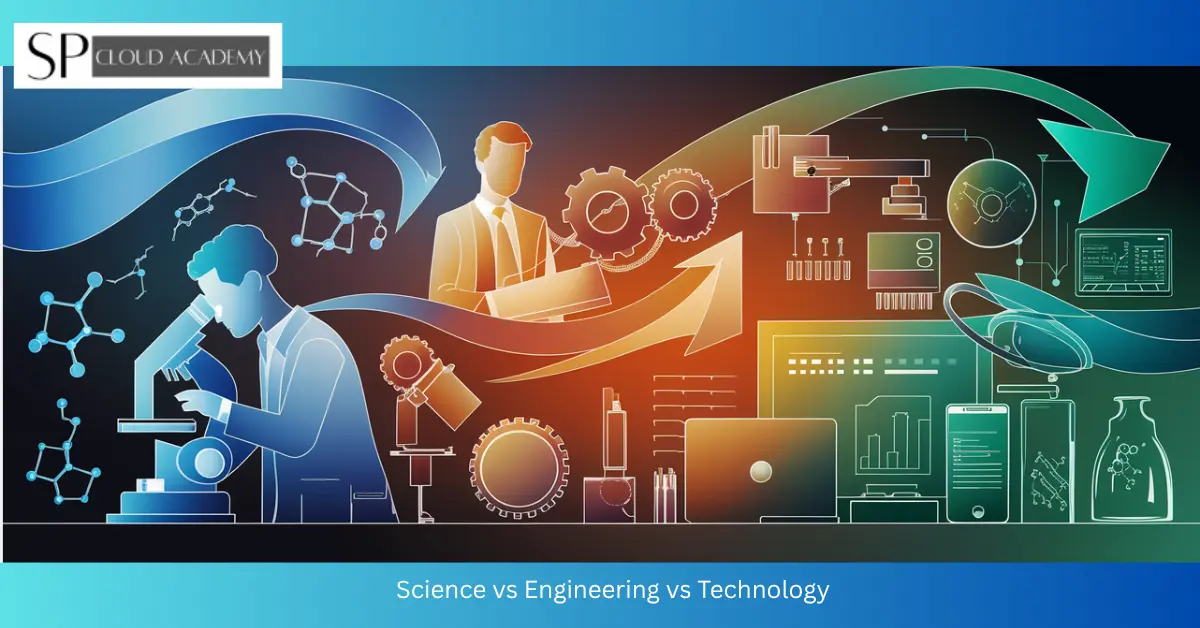Introduction
In today’s fast-paced, technology-driven world, engineering education must evolve to prepare students for the challenges of tomorrow. The CDIO Framework, a groundbreaking approach to engineering education, is leading this transformation by bridging the gap between theoretical knowledge and practical application. Standing for Conceive, Design, Implement, and Operate, the CDIO Framework equips aspiring engineers with the skills they need to thrive in real-world scenarios, fostering innovation, problem-solving, and industry readiness. This article explores how the CDIO Framework is revolutionizing engineering education, delving into its origins, components, implementation, benefits, and its pivotal role in shaping the future of the engineering profession.
With industries demanding graduates who can hit the ground running, traditional engineering curricula—often heavy on theory and light on practice—are no longer sufficient. The CDIO Framework addresses this by integrating hands-on, project-based learning into the educational experience, ensuring students are not just thinkers but doers. Whether you’re an educator, student, or industry professional, understanding the CDIO Framework offers valuable insights into how engineering education is adapting to meet global needs.
Background of the CDIO Framework
The CDIO Framework emerged from a pressing need to reform engineering education in the late 1990s. Spearheaded by the Massachusetts Institute of Technology (MIT) and a consortium of global universities, the initiative was launched in 2000 to address a critical disconnect: many engineering graduates lacked the practical skills required by employers. Industry feedback highlighted deficiencies in areas like teamwork, communication, and hands-on problem-solving—skills that traditional lecture-based programs often overlooked.
This gap prompted the creation of the CDIO Initiative, a collaborative effort to redesign engineering education around the full lifecycle of engineering projects. The goal was simple yet ambitious: produce engineers who could not only understand complex theories but also apply them effectively in real-world contexts. By focusing on the stages of Conceive, Design, Implement, and Operate, the CDIO Framework mirrors the professional engineering process, preparing students for the demands of modern industries such as aerospace, manufacturing, and renewable energy.
Since its inception, the CDIO Framework has grown into a global movement, adopted by universities across continents, from North America to Asia and Europe. Its emphasis on engineering curriculum design and practical learning has made it a cornerstone of educational reform, setting a new standard for how engineers are trained.
Understanding the CDIO Framework
At its core, the CDIO Framework is built around four interconnected stages that reflect the engineering process. These components—Conceive, Design, Implement, and Operate—form a holistic approach to education that balances creativity, technical expertise, and operational know-how. Let’s break down each stage:
Conceive
The Conceive phase is where innovation begins. Students identify a problem or need, analyze requirements, and brainstorm potential solutions. This stage emphasizes critical thinking and creativity, encouraging learners to consider factors like market demands, technological feasibility, and environmental impact. For example, a student might conceive a renewable energy system to address climate change, laying the foundation for the project’s development.
Design
In the Design phase, ideas take shape. Students create detailed plans, using engineering tools and methodologies to refine their concepts into actionable blueprints. This stage teaches precision and problem-solving, as learners must account for constraints like budget, materials, and safety standards. Designing a bridge, for instance, involves calculating load capacities and selecting appropriate materials—skills that are directly applicable to professional engineering.
Implement
The Implement stage brings designs to life. Students build prototypes, test their solutions, and refine them based on performance data. This hands-on experience is crucial for developing technical skills and resilience, as it mirrors the trial-and-error process engineers encounter in the field. Building a working model of a robotic arm, for example, requires troubleshooting and iteration—key aspects of practical engineering skills.
Operate
Finally, the Operate phase focuses on managing and maintaining the finished product. Students learn about system operation, lifecycle management, and sustainability, gaining insights into the long-term implications of their work. Operating a water filtration system, for instance, involves monitoring performance and ensuring it meets community needs—a lesson in responsibility and real-world impact.
Together, these stages create a comprehensive learning experience that prepares students for the full spectrum of engineering tasks. The CDIO Framework integrates these components into a seamless cycle, fostering a mindset that combines innovation with execution.
Implementation of the CDIO Framework
Adopting the CDIO Framework in engineering education requires a shift from traditional teaching methods to a more dynamic, project-based approach. Rather than relying solely on lectures and exams, institutions incorporate CDIO syllabus elements like design-build-test projects, teamwork exercises, and interdisciplinary collaboration. This transformation, while impactful, demands careful planning and resources.
How It Works in Practice
In a CDIO-based curriculum, students tackle real-world engineering challenges from day one. For example, a first-year project might involve designing and building a small wind turbine, guiding students through all four CDIO stages. Faculty act as mentors, providing guidance while allowing students to take ownership of their work. This active learning approach contrasts sharply with passive, theory-heavy models, making education more engaging and relevant.
Global Adoption
Universities worldwide have embraced the CDIO Framework with impressive results. Singapore Polytechnic, an early adopter, revamped its engineering diplomas to emphasize hands-on learning, leading to higher student satisfaction and employability. Similarly, the University of Liverpool in the UK integrates CDIO standards into its programs, using projects like autonomous vehicle design to teach practical skills. In Sweden, Chalmers University of Technology has become a leader in CDIO implementation, with students competing in international engineering challenges.
Challenges and Solutions
Implementing the CDIO Framework isn’t without hurdles. It requires modern facilities, trained faculty, and strong industry partnerships—resources that some institutions may lack. Additionally, assessing project-based learning can be complex, as outcomes vary between teams and projects. To address these challenges, schools develop detailed CDIO standards for assessment, use virtual simulations to reduce costs, and collaborate with companies to fund equipment and mentorship programs.
By overcoming these obstacles, institutions unlock the full potential of the CDIO Framework, creating a learning environment that mirrors the professional world engineers will enter.
Benefits of the CDIO Framework
The CDIO Framework offers a wealth of advantages, transforming both students and the engineering field at large. Its focus on practical engineering skills and real-world application delivers measurable outcomes that resonate with educators, learners, and employers alike.
Enhanced Student Learning
Through hands-on projects, students develop a deeper understanding of engineering concepts. Applying theory to practice reinforces knowledge and builds critical skills like problem-solving, communication, and collaboration. For instance, working on a team to design a drone teaches not only aerodynamics but also how to navigate group dynamics—a dual benefit of the CDIO approach.
Improved Employability
Graduates of CDIO programs are highly sought after by employers. Their ability to conceive innovative solutions, design functional systems, and implement them effectively makes them ready for the workforce from day one. A survey by the CDIO Initiative found that 85% of employers rated CDIO graduates as “well-prepared” for engineering roles, compared to 60% for traditional graduates.
Industry Alignment
The CDIO Framework aligns education with industry needs, addressing the global shortage of skilled engineers. By producing graduates who can tackle complex projects—like sustainable infrastructure or advanced robotics—CDIO helps industries innovate faster and more efficiently. This synergy between academia and the professional world is a key driver of its success.
Research-Backed Effectiveness
Studies underscore the framework’s impact. Research in the Journal of Engineering Education showed that CDIO students outperformed their peers in technical proficiency and professional skills. Another report from the European Society for Engineering Education highlighted improved retention rates in CDIO programs, as students found the hands-on approach more motivating than traditional methods.
CDIO and the Future of Engineering Education
As the world grapples with challenges like climate change, urbanization, and technological disruption, the CDIO Framework is paving the way for a future-ready engineering workforce. Its forward-thinking approach prepares students to address these issues with creativity, adaptability, and a global perspective.
Fostering Innovation
The CDIO Framework encourages students to think beyond textbooks, pushing the boundaries of what’s possible. Projects often involve cutting-edge technologies—like artificial intelligence or renewable energy—giving learners a head start in emerging fields. This focus on innovation ensures engineers can lead advancements rather than just adapt to them.
Interdisciplinary Learning
Modern engineering problems rarely fit neatly into one discipline. The CDIO Framework promotes collaboration across fields, such as combining mechanical engineering with data science to develop smart cities. This interdisciplinary approach mirrors real-world engineering teams, preparing students for diverse, multifaceted careers.
Sustainability and Responsibility
Sustainability is a growing priority in engineering, and CDIO integrates it into the curriculum. Students explore eco-friendly designs and lifecycle management, learning to balance technical performance with environmental and social impact. For example, a CDIO project might involve creating a zero-waste manufacturing process—a skillset vital for the future.
Entrepreneurship and Leadership
By guiding projects from conception to operation, students gain entrepreneurial skills like resource management and decision-making. This empowers them to launch startups, lead teams, or drive innovation within established companies. The CDIO Framework thus nurtures not just engineers, but visionaries who can shape the industry’s future.
Case Studies and Success Stories
Real-world examples highlight the CDIO Framework’s transformative power. Here are a few standout cases:
Chalmers University of Technology, Sweden
Students at Chalmers designed a solar-powered car as part of a CDIO project, competing in the World Solar Challenge. The experience honed their technical expertise while teaching project management and teamwork—skills that led to job offers from top automotive firms.
University of Pretoria, South Africa
In the mining engineering program, students apply the CDIO Framework to improve safety and efficiency in real mines. One team developed a low-cost ventilation system, now implemented across multiple sites, showcasing the framework’s practical impact.
Singapore Polytechnic
First-year students designed a water purification device for rural communities, taking it from concept to prototype in a single semester. The project not only taught engineering principles but also instilled a sense of social responsibility—a hallmark of CDIO’s holistic approach.
These success stories demonstrate how the CDIO Framework turns theoretical learning into tangible outcomes, benefiting students and society alike.
Criticisms and Limitations
Despite its strengths, the CDIO Framework faces some critiques. Addressing these ensures a balanced view of its role in engineering education.
Theoretical Depth Concerns
Critics argue that the focus on practical skills might dilute theoretical rigor. However, CDIO proponents counter that theory is reinforced through application, not sidelined—students master concepts by using them in projects.
Resource Intensity
The framework’s reliance on labs, equipment, and faculty training can strain budgets, especially for smaller institutions. Solutions like virtual simulations and industry partnerships help mitigate this, making CDIO more accessible.
Assessment Challenges
Evaluating diverse projects consistently is tricky. The CDIO Standards, a set of guidelines for implementation and assessment, address this by providing clear benchmarks, ensuring quality across programs.
The CDIO community continues to evolve, refining the framework to overcome these limitations and broaden its reach.

“Rethinking Engineering Education: The CDIO Approach” is a must-read for educators and engineers. It provides a structured framework for modern engineering education, emphasizing practical skills and innovation. Well-researched and insightful, it’s ideal for curriculum development. #Engineering #CDIO #Education #STEM #Innovation
Conclusion
The CDIO Framework is more than an educational model—it’s a revolution in how we prepare engineers for the future. By emphasizing Conceive, Design, Implement, and Operate, it creates graduates who are innovative, skilled, and ready to tackle the world’s biggest challenges. From enhancing employability to aligning with industry needs, its benefits are profound and far-reaching.
As engineering education adapts to a rapidly changing landscape, the CDIO Framework stands as a beacon of progress. It equips students with practical engineering skills, fosters interdisciplinary collaboration, and promotes sustainable innovation—qualities essential for the engineers of tomorrow. For institutions, educators, and students alike, embracing the CDIO Framework is a step toward a more dynamic, impactful engineering education.
See Also
-

The Ultimate Guide to Brainstorming: How to Turn Any Idea into Gold
-

The Hidden Secrets Behind Motivation Theory: What Really Drives Human Behavior
-

Short and Smart or Long and Strong? Choosing Between Skill-Based and Professional Diplomas
-

What’s the Real Difference Between Science, Engineering, and Technology?
-

Equality or Equity? The Hidden Key to Truly Inclusive Classrooms
-

Equality vs. Equity: Why Treating Everyone the Same Isn’t Always Fair
-

Teaching vs. Facilitating: Which Approach Shapes the Future of Engineering Education?
-

Paradigm Shifts in Lifelong Learning: Transform Your Mindset for Success
-

From Trend to Transformation: The Rise of Paradigm in Modern Life
